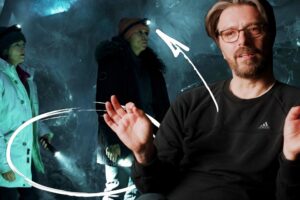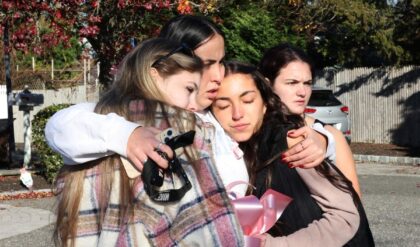A pivotal moment comes as the fourth season of “True Detective: Night Country” hits a thrilling end in episode six. Law enforcement officers Liz Danvers (Jodie Foster) and Evangeline Navarro (Kali Reis), find themselves at the entrance to the ice cave. After they reach a dead end, Liz decides they should head back, but just as they do so, the two end up falling into the cave’s lower levels.
“The maze really works. You have no idea where they’re going to,” cinematographer Florian Hoffmeister says.
He is referring to the ice caves in the fictional town of Ennis, Alaska where the show is set. The HBO series follows a dual narrative. One is the 6-year-old cold case of Annie K., the other, the other is the unnatural murders of the Tsalal research scientists.
Joining Variety’s Inside the Frame, Hoffmeister says, “It was very apparent that this series would become a lot about lighting.”
And he wasn’t wrong.

The production was shot in Iceland, but more importantly for Hoffmeister, the darkness was so substantial that if a person turned off their lights, they’d disappear. “That’s the kind of darkness that I want to depict,” he says.
With a lot of night shoots and low lighting, Hoffmeister had to find creative ways to light the set in a way that felt real. Likewise, Issa López, the creator of “True Detective: Night Country,” wanted everything to feel authentic.
When it came to that gripping sequence, López was adamant that Danvers and Navarro’s actual trip through the caves needed to be long enough and confusing enough so the reveal was never questioned.
Hoffmeister explains, “We had to really make sure that this (the station) is far enough away that you would never be able to connect those two dots before you actually go down into the world of the ice tunnels.”
The set consisted of three different parts. One was the entry, another was the intermediate part of the journey, and finally the ice cave part that led to the station.
Lighting the tunnels posed a technical challenge for Hoffmeister. There couldn’t be a glow because it was underground, and it was nighttime. There needed to be no light in the ice tunnels. He couldn’t just put them in there with flashlights.
Hoffmeister says, “That could be a legitimate way of approaching it from a standpoint of cinematography and visual storytelling, but then you would completely lose the sense of scale which really caters to the feeling of them getting lost.” He continues, “We had to come up with a lighting scheme that would allow the audience to get a sense of the scale, whilst maintaining the illusion that it’s completely dark.”
Once he had that, Hoffmeister needed to keep track of the headlights. “If they were at the wrong angle, it would create a flare in the camera lens and the actors would disappear.”
The other challenge was how to move the cameras in that space. “We were very adamant that we didn’t want to use handheld because it would feel like another person being present. So the Icelandic grips built a little two-wheeled cart.” That allowed Hoffmeister and his crew to mount a camera on the cart with a stabilized head and pulled it along. He adds, “There were a couple of sections where you could take the walls out and have passes.”
It all leads to the reveal that Raymond Clark, the sole surviving Tsalal scientist, is alive. And that’s when Danvers and Navarro learn where the tunnels lead to — Tsalal Research Station, and an underground lab.
On reflection, Hoffmeister says, “I think this episode really strikes a balance between really moving performances. If you think of Jodie Foster’s piece in the middle of it, where she just barely survives, and then earlier has this rant at Navarro for talking about her lost son.” He continues, “It had real action sequences. I think it is a very rich viewing experience.”



